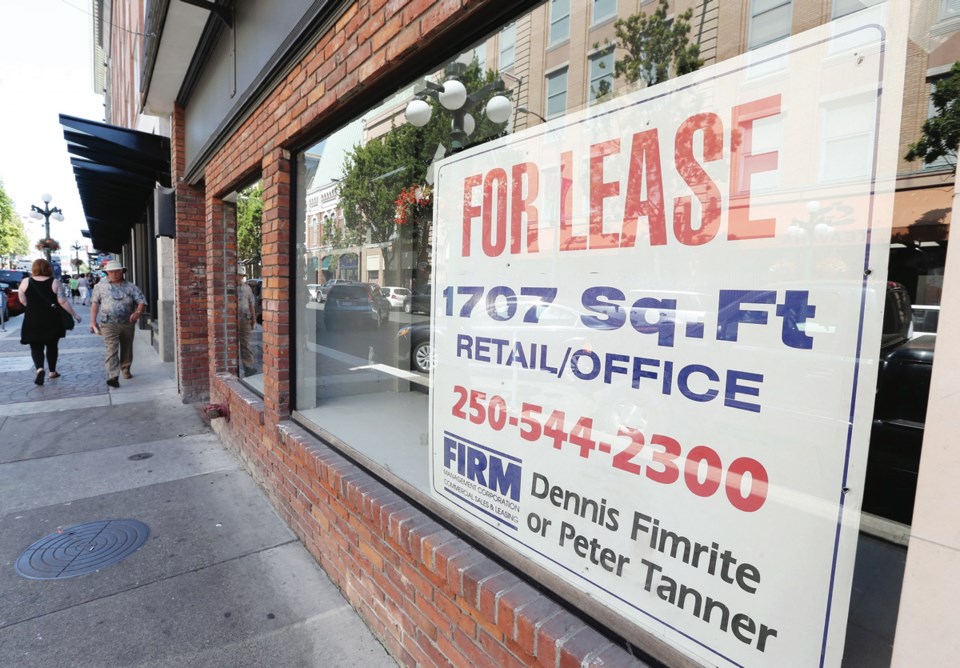 There’s something missing from the B.C. economic picture. A quarterly report released Tuesday shows enough generally positive indicators that the government continues to plan balanced budgets for the next three years. Retail sales are booming, the real estate market is hot and the economic growth rate is on the upswing.
There’s something missing from the B.C. economic picture. A quarterly report released Tuesday shows enough generally positive indicators that the government continues to plan balanced budgets for the next three years. Retail sales are booming, the real estate market is hot and the economic growth rate is on the upswing.
But where are all the new jobs?
This month is the fourth anniversary of the B.C. Jobs Plan, the Liberals’ determined effort to set the table for hundreds of thousands of new jobs over the long haul.
Four years into that ambitious, multi-faceted employment drive, even Finance Minister Mike de Jong had to concede the numbers aren’t where the B.C. Liberals would like them to be.
“It’s not achieved the level of growth and employment that we are striving to achieve. I think everyone in government would acknowledge that,” he said while discussing the quarterly report.
The report makes that clear. “Employment activity has been modest during the first seven months of 2015,” it states, citing a half per cent bump compared to last year.
That’s about 11,600 more jobs. It breaks down as a gain of 39,600 full-time jobs, offset by a loss of about 28,000 part-time jobs.
On the scale originally envisioned in the jobs plan, that’s peanuts.
A seven-year chart shows about 2,250,000 people employed in B.C. in 2008. The number dropped to 2,184,000 during the recession and has since rebounded to 2.3 million.
The Jobs Plan, with its $300 million worth of spending, was unveiled two years after the low-water mark for employment, when the number was about 2,225,000. So in the four years it has been in effect, about 25,000 more people are employed. Even though the plan is back-end loaded, meaning most of the big growth is expected several years out when and if LNG plants get developed, the numbers to date are weak.
The quarterly breakdown of the labour market found more than 10,000 more jobs in both manufacturing and transportation sectors, but losses of 9,686 in retail and wholesale trade, and 7,171 in finance, insurance, real estate and leasing.
Some of the numbers are just confounding. De Jong said there’s no rationale for the fact that the retail sales jumped 7.6 per cent in the quarter, while shedding almost 10,000 jobs.
“It defies an explanation,” he said.
The monthly unemployment rate averaged 5.9 per cent so far this year, slightly below last year and one point below the national rate. The Finance Ministry expects employment to increase by 12,800 jobs this year and more next year.
De Jong said “on a comparative basis,” the plan is working.
The size of the employment market is increasing as people move into B.C., and that is slightly outpacing the job gains.
“The plan to generate additional employment is achieving a result. We’re more ambitious than the numbers that we’ve achieved thus far which is why it remains a priority for us. We’re seeing growth, but not at the rate we’d like.”
NDP critic Carole James said the sluggish job numbers are a worrisome part of the report, as the numbers are less than half what was first predicted.
The continued focus on LNG is at the expense of other sectors, she said. The economic numbers are mostly buoyed by the real-estate market. “While I think real estate is always going to play a role, you don’t create a strong economy without having diversity.”
Just So You Know: Also in the report is a notice of an upcoming milestone for fiscal nerds. B.C. is on track by 2019 to eliminate the historical operating debt.
That’s the accumulation of debt arising from deficit budgets stretching back decades. Over the past 45 years, about half the budgets have been in the red. The debt builds and recedes according to differing government priorities. It stands at $9 billion now and, under the current plan, is slated to drop sharply over three years and be paid off in 2019. But total debt, mostly for infrastructure building, is forecast to jump another $6 billion to $69 billion over that time frame.



